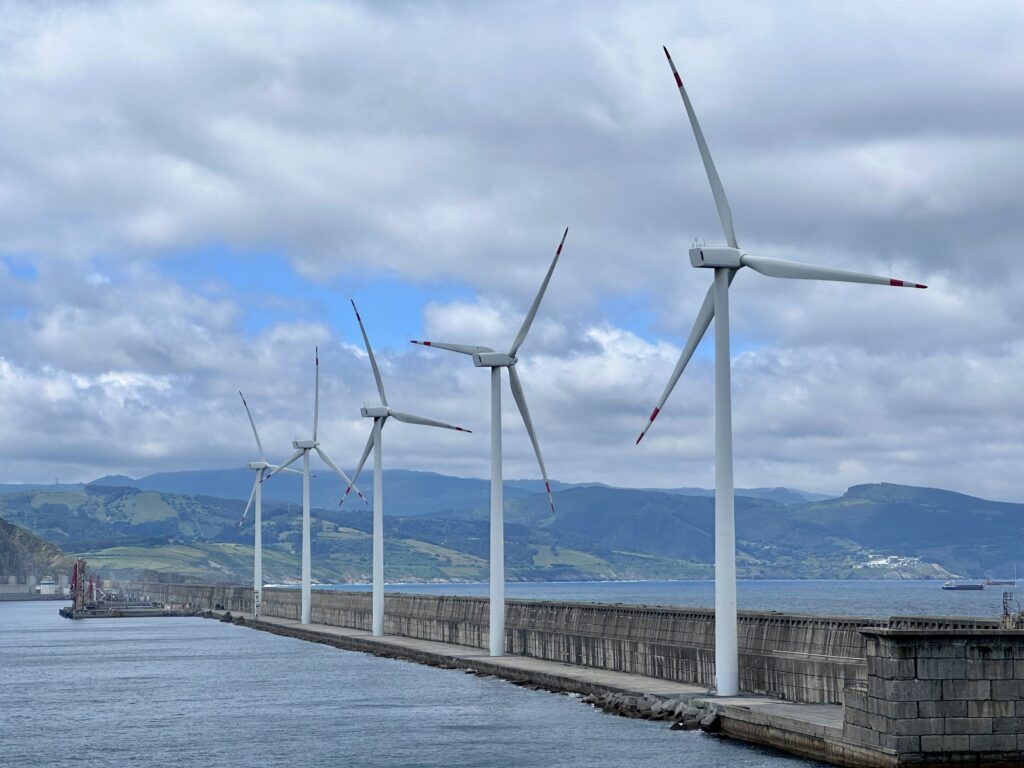Regulation is supposed to be the solid ground beneath the waves; and with international guidelines and regulation evolving fast, offshore wind developers need to keep pace.
In 2025, sweeping policy reforms are reshaping everything. From permitting and subsidies, to environmental protections and updated grid planning, across the board the regulatory changes present both opportunities and risks.
So let’s dive in.

Why policy matters in offshore wind
From initial seabed leasing to eventual grid integration, every phase of an offshore renewables development project is hinged on regulatory requirements.
Clear, forward-thinking policy creates certainty for investors, accelerates deployment, and safeguards marine ecosystems; and where policy is lacking (or even non-existent) projects are stalled, there’s less energy on the grid, and the environment usually pays the price.
But robust policy takes time to consider, pass, and be implemented and eventually even reformed. And the offshore wind industry is expanding rapidly. Policy makers and stakeholders alike need to keep pace. In 2025, as countries scramble to meet climate goals and secure independent energy, policy is a strategic cornerstone – and offshore wind must adapt inline with the ever-evolving regulatory landscape.
Key policy changes shaping the offshore renewables industry
With offshore wind becoming an increasingly favoured renewable energy solution, policy frameworks have been shifting.
In 2025, we’re seeing some complete overhauls of outdated permitting systems, governments that are ready to rethink financial models and tighten environmental regulations, and an international plan for smarter grid connections.
Here’s how the latest policy changes are shaping the future of offshore renewables, and what developers should be paying attention to.
1. Permitting and streamlining reforms
The permitting process is a bottleneck in offshore wind development; a bloated maze of bureaucracy that regularly spans various environmental assessments, local consultations, and multi-agency reviews. Recent policy changes aim to address these inefficiencies.
Adopted in March 2024, the EU’s Renewable Energy Directive III aims to fast-track renewable energy development. RED III’s “go-to areas” are pre-assessed for potential environmental conflicts and biodiversity, which means permitting can be accelerated (capped at 12 months for completely new builds) and developers can plan with more certainty.
Here in the UK, the Offshore Wind Environmental Package (launched in late 2023) is streamlining approvals for wind farms with lower ecological risk. Being a collaboration between DEFRA, Natural England, and the Crown Estate, it enables data sharing, coordinated environmental assessments, and earlier engagement with regulators – designed to cut the average permitting time by 40%.
For the offshore wind industry, and renewable energy developments more broadly, this isn’t just reducing red tape. Direct acceleration of project timelines shows governments are serious about hitting their climate targets.
2. Subsidy shifts and auction models
Where fixed subsidies once ruled in offshore renewables, more competitive auction models are now more dominant; these changes are reshaping who actually builds, and how they do it.
The UK’s Contracts for Difference (CfD) scheme remains the country’s flagship support mechanism, but recent auction rounds have revealed cracks in the system. In Allocation Round 5 (2023), not even a single offshore wind bid was successful, with developers citing unviable strike prices in the face of soaring supply chain costs.
The government responded by raising strike prices for Allocation Round 6 (2024), and including inflation indexing and flexibility clauses for major suppliers – reflecting rises in supply chain costs. AR6 has been more successful, with contracts being awarded for 5GW offshore wind capacity; a pretty solid recovery from the previous round.
Across the North Sea, Denmark embraced zero-subsidy tenders, where winning bidders accept market exposure with no guaranteed revenue support. But, as of April 2025, Denmark (a pioneer in the offshore wind sector) has acknowledged that its zero-subsidy model for offshore wind is unsustainable under current market conditions. In response, Energy Minister Lars Aagaard announced plans to launch a new offshore wind tender – and the government aims to complete this tender by spring 2026, recognising the need to adapt to rising costs, higher interest rates, and supply chain challenges affecting the offshore wind industry.
It’s clear there’s still some work to be done to achieve a suitable and sustainable auction model for the UK and Europe’s offshore wind developments.
3. Environmental regulation tightening
Offshore wind is one of the more environmentally-friendly renewables choices, but the industry isn’t without fair scrutiny. As more turbines spring up, and human marine activity intensifies, regulations are (rightfully) tightening to safeguard vulnerable ocean ecosystems.
In Europe, the Habitats Directive and Birds Directive continue to require rigorous impact assessments for projects near protected sites, including Natura 2000 areas. These directives have delayed or reshaped multiple wind farm proposals, particularly in ecologically sensitive zones like the Dogger Bank and the Dutch Borssele sites.
Strategic Environmental Assessments (SEAs) are also now mandatory in most EU member states and cover entire marine zones. These evaluate the cumulative impacts of multiple developments, rather than on a project-by-project basis, crucially guiding long-term spatial planning.
The UK follows similar rules through the Habitats Regulations Assessment (HRA), but has introduced reforms to streamline the process for projects deemed “low risk”, provided developers can present robust ecological data up front.
Globally, marine protection is extending beyond simply mitigating habitat destruction caused by construction activities. The IMO Ballast Water Management Convention, which came into force in 2017 was fully enforced by 2024, and is due significant amendments in 2025. Focused on installation and service vessels operating internationally, compliance means more rigorous water treatment systems and stricter vessel inspection protocols, increasing operational complexity for offshore logistics.
4. Local content requirements
The UK government wants offshore wind energy, but it also wants the jobs, manufacturing, and supply chain operations that come with industrial development. Local content requirements are becoming a critical part of policy packages as a result of this.
Supply Chain Plan Requirements are embedded into the CfD application process, and bidders must submit detailed strategies showing how their projects will support domestic industry, and these plans are independently assessed (and can make or break a CfD award).
5. Grid connection and transmission planning
You can’t power homes if you can’t plug in. Grid connection is fast becoming one of the most complex challenges in offshore wind; and governments are responding with strategic planning reforms.
This is more than just a planning issue — it’s a necessary shift toward a smarter, more scalable energy system. Better policies help reduce seabed disruption, cuts costs, and supports grid flexibility in a decarbonised future.
The EU’s revised TEN-E Regulations (Trans-European Networks for Energy), updated in 2022 and operationalised in 2024, supports offshore energy “meshes” (interconnected transmission hubs across the North Sea and Baltic). These allow multiple wind farms from different nations to connect to a shared grid, improving reliability and lowering infrastructure costs.
In the UK, the Offshore Transmission Network Review (OTNR) aims to move the UK from a radial connection system (where each wind farm builds its own cable) to a coordinated “networked” system. In 2025, the OTNR’s early-stage proposals are becoming reality, with Pathfinder projects like East Anglia Hub beginning to adopt shared cabling and substations.
Challenges introduced by uncertain or conflicting policy
So, there’s been a lot of progress in recent years, and we’re well on our way to a greener, more connected, and more efficient future in the offshore wind industry. But there are still frictions and inconsistencies caused by overlapping permitting requirements, fragmented environmental standards, and unclear grid access rules.
Across Europe, developers working in cross-border waters report mismatched environmental assessment processes – which complicates project design and increases costs. This is all more uncertainty for offshore development projects, which in turn deters investments, increases project risk, and reduces general confidence in the offshore renewables industry.
And these aren’t just cross-border frictions, either. In the UK, competing demands between defence, fisheries, and offshore energy have led to long negotiation phases that have delayed projects despite the regulatory reforms and streamlined processes.
Ultimately, as offshore wind moves from niche to necessary, streamlined and coherent policy frameworks are increasingly essential for preventing further delays and improving project certainty.
Opportunities and future trends in offshore renewables policy
Regulatory mismanagement has been the name of the game in the offshore industry for a while, but the emerging policy trends do offer significant improvement and opportunity.
Across Europe, we’re seeing a shift towards cross-border grid coordination, enabled by the EU’s TEN-E Regulation, which will unlock multi-country offshore energy hubs. And in the UK, coordinated transmission models are evolving through the OTNR, creating economies of scale for grid access and reducing environmental disruption.
Globally, there’s an increasing emphasis on climate-aligned finance, with policies incentivising transparent reporting and climate-resilient designs. Governments are also exploring adaptive permitting regimes, allowing projects to evolve based on emerging data, ensuring both innovation and environmental stewardship.
The future of offshore wind policy isn’t just faster; it’s smarter, more collaborative, and increasingly focused on resilience, equity, and innovation.
What do offshore wind developers and stakeholders need to know?
In 2025, developers must treat policy literacy as a core competency; not a compliance afterthought.
Staying ahead means engaging early with regulators, building strong local partnerships, and anticipating shifts in both environmental and financial frameworks.
- Prioritise high-quality spatial data: Access to accurate, high-resolution marine spatial data is essential for site selection, cable routing, and environmental risk assessment.
- Implement proactive environmental assessments: Early-stage ecological studies allow for faster permitting (baselining, habitat mapping, cumulative impact modeling).
- Adopt flexible project designs: Plan for modular infrastructure, adaptive construction timelines, and smart transmission integration to reduce risk and future-proof assets.
Governments want energy, but they also want jobs, resilience, and biodiversity. Developers must demonstrate their value beyond just megawatts, in the form of local investment, ecological restoration, and transparent ESG metrics.
NeuWave supports the evolving needs of offshore wind development…
Turn regulatory complexity into strategic clarity with NeuWave. As policy becomes both a risk and a differentiator, the industry must respond with agility, transparency, and foresight. Our AI-powered tools deliver smarter, faster environmental assessments.
Confident compliance with future-ready planning.

